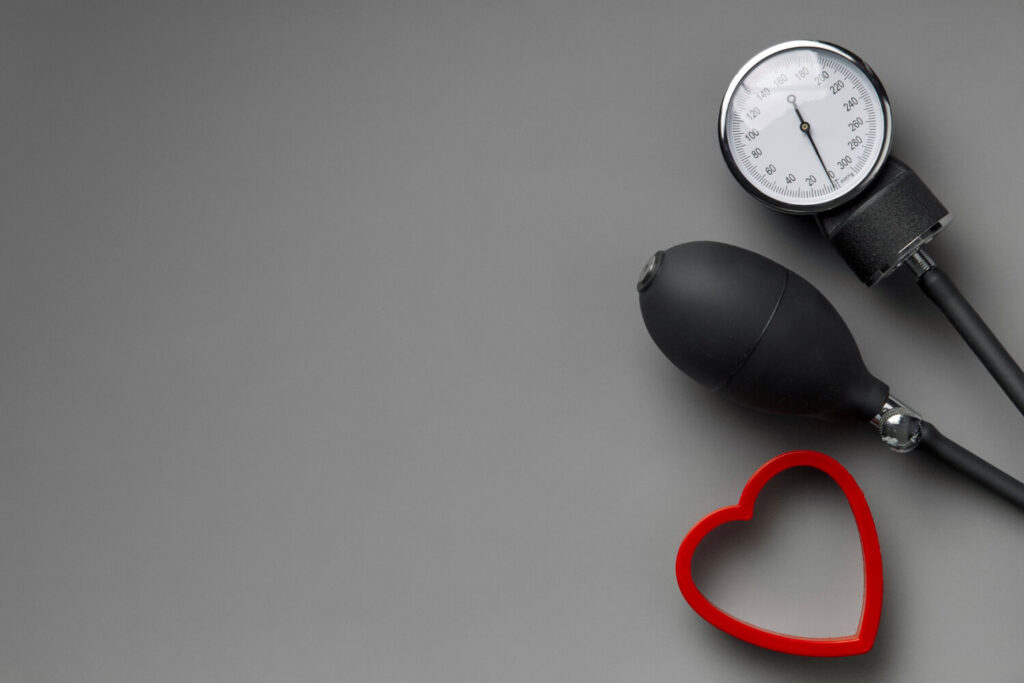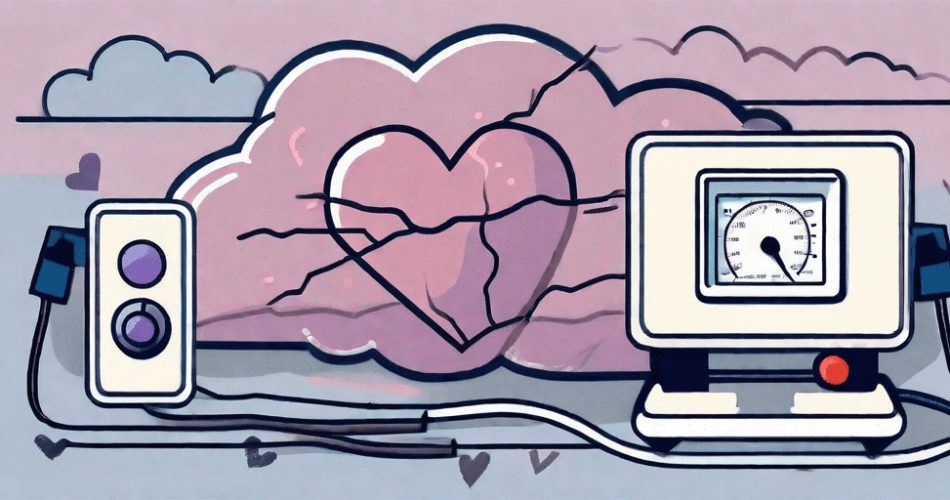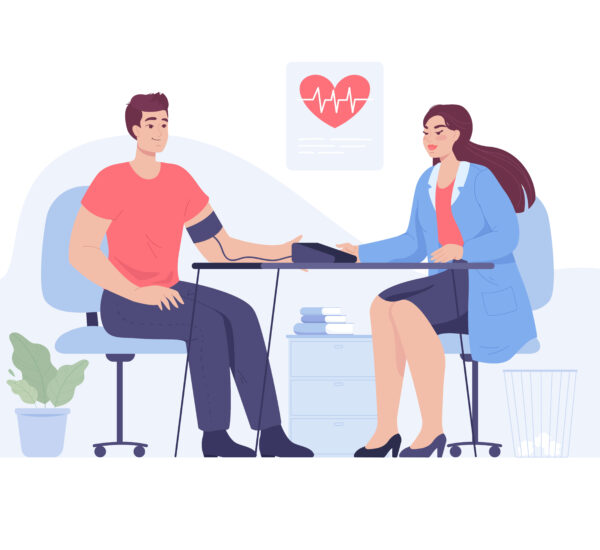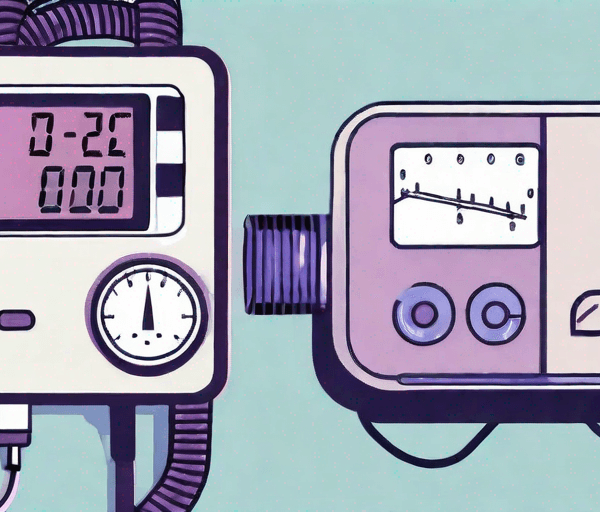Almost time for the festivities, which means possible risks to hypertension will also be present. In most cases, patients with such condition tend to overlook the physical and emotional signs of the high blood pressure. This habit can result in higher risks, which can be fatal in the long run.
In this blog, we’ll cover each warning signs to educate patients about the blood pressure condition. That way, they can prolong their health, and at the same time, enjoy the festivities with a longer life. Let’s begin!
Understanding High Blood Pressure

Before diving into the signs of high blood pressure, it is crucial to have a basic understanding of the condition. Blood pressure is the force exerted by the blood against the walls of arteries as it flows through them. It is measured in millimeters of mercury (mmHg) and consists of two numbers – systolic pressure and diastolic pressure. The systolic pressure represents the force when the heart contracts and pumps blood out. Meanwhile, the diastolic pressure represents the force when the heart is at rest and refilling with blood.
High blood pressure occurs when the force of blood against the artery walls is consistently too high. A blood pressure reading of 140/90 mmHg or above is generally considered high. However, it is important to note that the exact threshold for high blood pressure. Usually, it varies depending on individual factors such as age and underlying health conditions. One of the common readings is 110/70 blood pressure, which is within the range of the normal blood pressure. If the reading goes above that, the patient must seek help immediately.
Causes and Risk Factors of High Blood Pressure
There are several factors that can contribute to the development of high blood pressure. Understanding these causes and risk factors can help individuals take proactive steps towards prevention and management. Some of the common causes and risk factors include:
- Family history: If you have a family history of high blood pressure, you may be at risk of developing the condition. Genetic factors can play a significant role in determining an individual’s susceptibility to high blood pressure.
- Age: Blood pressure tends to increase with age, and the risk of developing high blood pressure also increases. As individuals age, the walls of their arteries may become less elastic, leading to higher blood pressure.
- Unhealthy lifestyle: Poor dietary choices, lack of physical activity, excessive alcohol consumption, and smoking can contribute to high blood pressure. Consuming a diet high in sodium and saturated fats, combined with a sedentary lifestyle, can lead to weight gain. Thus, resulting in increased blood pressure.
- Obesity: Being overweight or obese puts additional strain on the heart and can lead to high blood pressure. Excess body weight increases the volume of blood in circulation, which in turn raises blood pressure.
- Chronic conditions: Certain chronic conditions such as diabetes, kidney disease, and sleep apnea can increase the risk of developing it. These conditions can affect the body’s regulation of blood pressure, leading to elevated levels.
- Stress: Prolonged periods of stress can contribute to high blood pressure. When individuals are under stress, their bodies release stress hormones. It can cause blood vessels to constrict and blood pressure to rise.
Understanding the causes and risk factors associated with high blood pressure, individuals can make informed decisions about their lifestyle choices. Furthermore, being aware leads to taking immediate yet appropriate measures to prevent or manage the condition. If assistance is needed, it would be best to consult with a healthcare professional for personalized advice and guidance.
Physical Signs of High Blood Pressure
While high blood pressure is often asymptomatic, there are some physical signs that may indicate its presence. It is important to note that these signs may vary from person to person and some individuals may not experience any symptoms at all.
High blood pressure, also known as hypertension, is a condition characterized by the force of blood against the walls of the arteries being consistently too high. This can lead to serious health problems, such as heart disease, stroke, and kidney damage. Identifying the physical signs of high blood pressure can be crucial in detecting and managing this condition.
Headaches and Dizziness
One common physical sign of high blood pressure is persistent headaches, particularly in the morning. These headaches may be accompanied by dizziness or a feeling of lightheadedness. The increased pressure within the blood vessels can cause blood vessels in the brain to constrict, resulting in headaches. However, it is important to note that headaches can have various causes, so it is essential to consult a healthcare professional to determine the underlying cause.
Furthermore, dizziness and lightheadedness can occur due to the inadequate blood supply to the brain caused by high blood pressure. The reduced blood flow can affect the balance centers in the inner ear, resulting in a feeling of unsteadiness.
Shortness of Breath
Another physical sign is shortness of breath, especially during physical exertion or when climbing stairs. High blood pressure can put strain on the heart and lungs, leading to reduced oxygen supply and resulting in difficulty breathing. The heart has to work harder to pump blood against the increased pressure, which can cause the heart muscles to become weaker over time. This can lead to inefficient oxygen delivery to the body’s tissues, causing breathlessness.
Additionally, the accumulation of fluid in the lungs, known as pulmonary edema, can occur as a result of untreated high blood pressure. This fluid buildup can further contribute to shortness of breath and difficulty breathing.
Nosebleeds and Blood Spots in the Eyes
In some cases, high blood pressure can cause nosebleeds or the appearance of small blood spots in the whites of the eyes. These occur due to the strain on the blood vessels caused by elevated blood pressure.
The delicate blood vessels in the nose can rupture or bleed when exposed to high pressure, leading to nosebleeds. Similarly, the tiny blood vessels in the whites of the eyes, known as subconjunctival hemorrhages, can burst and result in the appearance of blood spots. While nosebleeds and blood spots in the eyes can be alarming, they are not always indicative of high blood pressure and can be caused by other factors as well.
It is important to note that these physical signs are not exclusive to high blood pressure and can be attributed to other medical conditions. Therefore, it is crucial to consult a healthcare professional for a proper diagnosis and appropriate management.
Emotional Signs of High Blood Pressure

In addition to physical signs, high blood pressure can also have a significant impact on emotional well-being. It is important to be aware of these emotional signs and recognize the link between high blood pressure and emotional health.
Living with high blood pressure can be a daunting experience, as it often brings about a range of emotional symptoms that can affect daily life. Let’s delve deeper into some of these emotional signs:
Anxiety and Restlessness
One of the most common emotional signs of high blood pressure is the presence of anxiety and restlessness. People with high blood pressure may experience a constant sense of unease or worry, even in situations where there is no apparent cause for concern. This heightened state of anxiety can be quite distressing and may lead to difficulties in managing stress effectively.
Moreover, the restlessness associated with high blood pressure can make it challenging for individuals to relax and find peace of mind. This can interfere with their ability to engage in activities they once enjoyed, leading to a decrease in overall well-being.
Mood Swings and Irritability
Fluctuations in blood pressure levels can contribute to mood swings and irritability. Individuals with high blood pressure may find themselves experiencing sudden shifts in mood, going from feeling calm and content to becoming easily frustrated, impatient, or agitated, often over minor issues.
These mood swings can strain relationships and make it difficult for individuals to maintain a positive outlook on life. It is important for individuals with high blood pressure to be mindful of their emotional state and seek support when needed to manage these mood changes effectively.
Difficulty Concentrating
High blood pressure can also have a significant impact on cognitive function, making it challenging to concentrate and focus on tasks. Individuals may find it difficult to retain information, experience cognitive lapses, and struggle with memory recall.
This difficulty in concentrating can affect various aspects of life, including work, studies, and daily responsibilities. It is essential for individuals with high blood pressure to implement strategies to improve focus and cognitive performance, such as practicing mindfulness techniques or seeking guidance from healthcare professionals.
Overall, it is crucial to recognize that high blood pressure not only affects the physical health of individuals but also has a profound impact on their emotional well-being. By understanding and addressing these emotional signs, individuals can take proactive steps to manage their high blood pressure effectively and improve their overall quality of life.
The Connection Between High Blood Pressure and Emotional Health

There is a bidirectional relationship between high blood pressure and emotional health. High blood pressure can contribute to emotional distress, while emotional factors such as stress can also impact blood pressure levels.
Let’s delve deeper into how high blood pressure affects your emotions and the intricate relationship between stress and hypertension.
How High Blood Pressure Affects Your Emotions
Elevated blood pressure can disrupt the delicate balance of chemicals in the brain, which can have a profound impact on mood regulation. The increased pressure in the blood vessels can impede the flow of oxygen-rich blood to the brain, affecting its optimal functioning. This disruption can lead to mood swings, irritability, and even depression.
Furthermore, the physical discomfort caused by high blood pressure symptoms can contribute to emotional distress and a decreased quality of life. Persistent headaches, dizziness, and shortness of breath can take a toll on one’s emotional well-being, leading to feelings of frustration, anxiety, and even helplessness.
It is crucial to address the emotional impact of high blood pressure alongside its physical manifestations. Seeking emotional support, engaging in stress-reducing activities, and maintaining a healthy lifestyle can all play a significant role in managing both the physical and emotional aspects of hypertension.
Stress and High Blood Pressure
Stress is a common trigger for high blood pressure, and the relationship between the two is complex and multifaceted. When individuals experience stress, whether it be due to work, personal relationships, or other life circumstances, the body releases stress hormones such as adrenaline and cortisol.
These hormones cause blood vessels to constrict and the heart to beat faster, increasing blood pressure temporarily. While this response is natural and necessary in acute stress situations, prolonged or chronic stress can contribute to the development of hypertension.
Chronic stress can lead to unhealthy coping mechanisms such as overeating, sedentary behavior, and excessive alcohol consumption, all of which can contribute to high blood pressure. Additionally, individuals experiencing chronic stress may engage in unhealthy lifestyle habits, such as smoking or neglecting regular exercise, which further elevate the risk of hypertension.
It is essential to recognize and manage stress effectively to maintain optimal blood pressure levels. Engaging in stress-reducing activities such as exercise, meditation, and spending time with loved ones can help mitigate the impact of stress on blood pressure.
Managing High Blood Pressure During the Holidays

The holiday is just around the corner, which serves as a challenge to patients with high blood condition. With different factors affecting one’s blood pressure, it is crucial to be purse self-awareness to prevent possible complications. Here are some of the recommended ways to manage the condition.
Lifestyle Changes to Lower Blood Pressure
Despite the festivities, it is still important to mind how they perform their lifestyle, especially if it can affect the condition further. With patients of hypertension, it is a must to keep a healthy lifestyle through daily exercise and avoiding stressors.
Doing so, allows patients to be free from conflicts that may trigger the constriction of blood vessels. Thus, leading to a healthy pumping of blood throughout the body.
Dietary Choices
Another way to prevent possible progression of hypertension is through being careful of what to consume. There can be several temptations during the celebrations, such as fatty foods and alcohol.
It would be best to abstain or at least limit the consumption. Doing so, allows the patient to be free from worries as both food and drink can affect the blood vessels too.
Final Takeaway
Taking care of your health starts by practicing self-awareness. Doing so allows you to easily identify the signs of blood pressure, especially if you are prone to having one.
Enjoy the festivities, but don’t forget how to manage the condition before it worsen. Book an online consultation with a cardiologist for immediate guidance about your condition.



